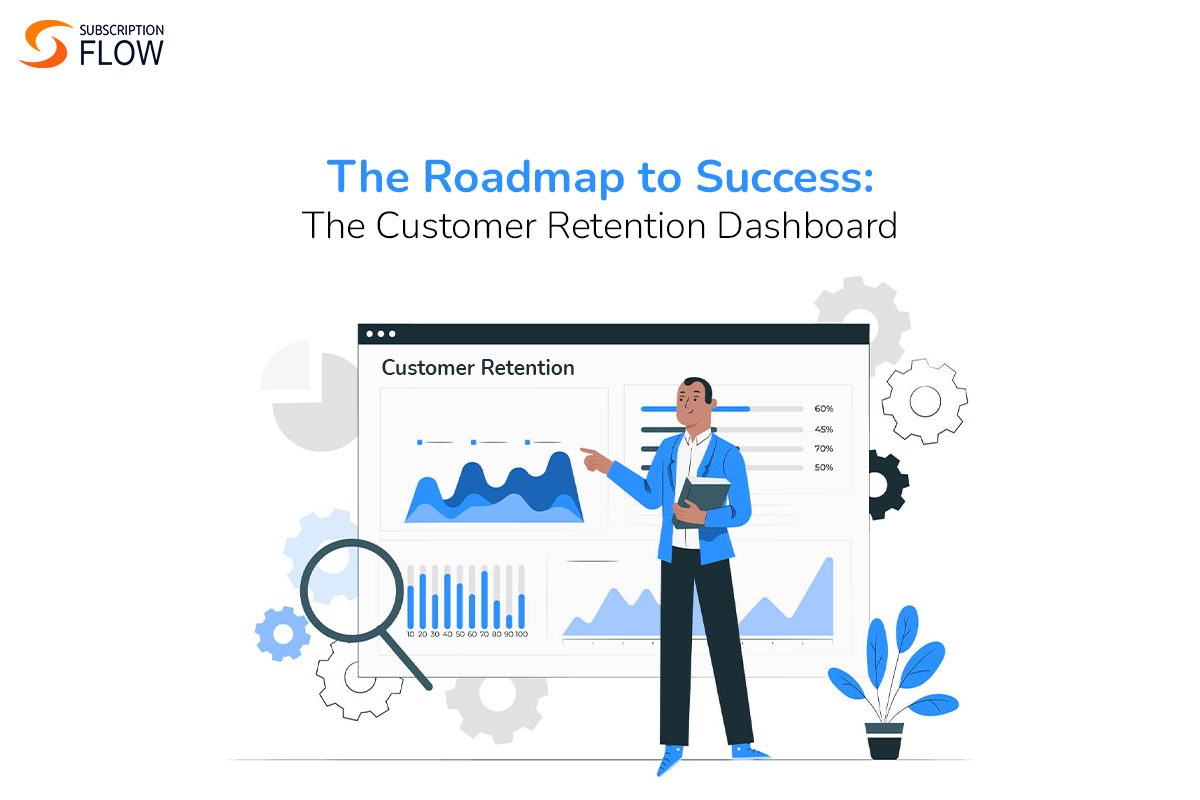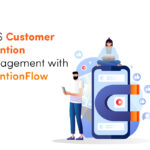
The Roadmap to Success: The Customer Retention Dashboard
Any business offering subscriptions knows the importance of effectively retaining customers to achieve sustainable growth. While marketing and sales efforts may convert leads into paying customers, if you cannot retain these customers over time, you are simply pouring into a leaking bucket.
Customer retention, when done right, ensures a steady revenue stream, strengthens brand loyalty, and opens doors to upselling and cross-selling opportunities that increase the lifetime value of your customers.
The first step to effective retention is to closely track key retention metrics such as retention rates, churn rates, cancellations, contractions, expansions, etc. In this article, we explore an indispensable tool that aids in achieving your retention goals: the customer retention dashboard. We will also discuss some of the key metrics it tracks and how they can be leveraged for business success.
What is a Customer Retention Dashboard?
A retention software dashboard is a centralized hub where businesses can access real-time information about customer behaviour, engagement, and loyalty. It consolidates data from various sources, such as customer interactions, purchase history, and feedback, and presents it in an easy-to-understand format. The purpose of this dashboard is to provide businesses with a comprehensive overview of their customer retention performance at a glance.
The metrics linked to customer retention that are tracked by the dashboard include customer churn rate, customer lifetime value, repeat purchase rate, customer satisfaction score, and more. Each metric offers valuable insights that enable data-driven decision-making and empower businesses to optimize their customer retention initiatives, resulting in sustainable growth.
Customer Retention Metrics
In this section, we delve into the specific metrics that a customer retention dashboard typically tracks and explore their significance in greater detail. The following are some important KPIs linked to customer retention, what they are, and how tracking them grows your bottom line.
1. Customer Churn Rate (CCR)
What is It?
Churn rate, also known as customer attrition rate, refers to the percentage of customers or subscribers who discontinue their relationship with a business over a specific period of time.
How is It Calculated?
The churn rate is typically calculated by dividing the number of customers lost during a given period (or the difference between customers at the start and end of the period) by the total number of customers at the beginning of that period, multiplied by 100 to express it as a percentage.
Why is It Important?
The CCR is a crucial metric used to assess the health of a business, as a high rate indicates customer dissatisfaction and highlights a need to discover the underlying cause of this dissatisfaction. SubscriptionFlow’s acquisition and retention dashboard updates the CCR in real-time and displays it so you waste no time in plugging revenue leaks.
Read More: Churn Rate Vs Retention Rate: Your Ultimate Guide
2. Customer Retention Rate (CRR)
What Is It?
Retention rate is a metric that measures the percentage of customers who maintain their subscription over a specific period of time.
How Is It Calculated?
The retention rate is calculated by subtracting the number of customers acquired during the given period from the total number of customers at the end of that period, and then dividing the result by the total number of customers at the beginning of the period. The resulting value is typically multiplied by 100 to express it as a percentage.
Why Is It Important?
The retention rate is the opposite of the churn rate and is a key indicator of customer loyalty and satisfaction. Both together paint a complementary picture of your overall business health. Retention software dashboards clearly display this key metric on your dashboard for close monitoring.
3. Cancellations
Cancellations refer to the act of customers ending their relationship or subscription with a business. It represents the number of customers who actively choose to discontinue their engagement, often resulting in a decrease in customer count and, consequently, in revenue as well.
4. Contractions
Contractions indicate a reduction in the revenue generated from existing customers or subscribers due to downgrades or changes in the level of service or product they are availing. It represents a decrease in the average revenue per customer without a direct impact on the total customer count. This could involve a situation where a subscriber downgrades or suspends their subscription, both of which are strong churn indicators.
Read More: Effectively Deflect Churn: Demystifying Churn Indicators
5. Expansions
Expansions refer to the increase in revenue generated from existing customers or subscribers. It occurs when customers upgrade their subscriptions or purchase additional products or services, leading to a growth in the average revenue per customer without necessarily increasing the customer count.
6. Gross & Net Retention
What Are They?
Gross and net retention are two metrics used to measure customer retention in terms of revenue retention, and both provide different perspectives on the performance of a business.
- Gross retention measures the percentage of customers or subscribers who continue their relationship with a business over a specific period, without accounting for any additional customers acquired during that same period.
- Net retention, also known as net revenue retention, takes into account not only the retention of existing customers but also the additional revenue generated from upsells, cross-sells, and expansions within the customer base during a specific period. It considers the growth within the existing customer base alongside retention.
How Are They Calculated?
If a business has 1,000 customers at the beginning of a month and retains 900 of them by the end of the month, the gross retention rate would be 90% (900 customers retained out of 1,000).
The net retention rate is calculated by summing the revenue from retained customers and additional revenue from expansions or upgrades within the customer base and then dividing it by the revenue generated from the same cohort of customers in the previous period. The resulting value is typically expressed as a percentage.
For instance, if a business retains 900 customers out of 1,000 and generates an additional $10,000 in revenue from upsells and expansions within that customer base, while the previous period revenue from the same cohort was $100,000, the net retention rate would be calculated as follows:
A net retention rate above 100% indicates that the business is not only retaining its customers but also driving additional revenue growth from the existing customer base. It demonstrates the ability to upsell or expand relationships with customers, contributing to overall business growth.
Why Are They Important?
Both gross and net retention rates provide valuable insights into customer retention performance. While gross retention focuses solely on customer retention, net retention offers a more comprehensive view by considering both retention and expansion within the existing customer base.
These metrics help businesses maximize revenue opportunities within their customer relationships and can easily be accessed on SubscriptionFlow’s intuitive and customizable dashboard.
7. Monthly Recurring Revenue (MRR)
Monthly Recurring Revenue is also a vital metric used to measure the predictable and recurring revenue generated from subscription-based business models. It represents the total revenue generated on a monthly basis from active subscriptions or recurring charges, excluding one-time fees or non-recurring revenue sources.
MRR provides a snapshot of the business’s revenue stability and growth potential, as it takes into account the recurring nature of subscription-based revenue streams.
Read More: What is MRR, And, Why Is It Inevitable for Measuring Recurring Revenue for Subscription Businesses?
Final Thoughts
Suffice it to say customer retention goals can only be achieved by closely monitoring key metrics linked to retention. Customer retention dashboards serve as centralized hubs that provide real-time information about customer behaviour, engagement, and loyalty.
By consolidating data from various sources and presenting it in an easy-to-understand format, these dashboards offer a comprehensive overview of customer retention performance. Leveraging these dashboards allows businesses to make informed decisions, address customer dissatisfaction, foster loyalty, and maximize their revenue potential.
With SubscriptionFlow’s user-friendly and customizable dashboard, businesses can effortlessly access and analyze these metrics, enabling them to enhance their customer retention initiatives and achieve long-term success in the subscription industry. Book a demo with us to learn more!










